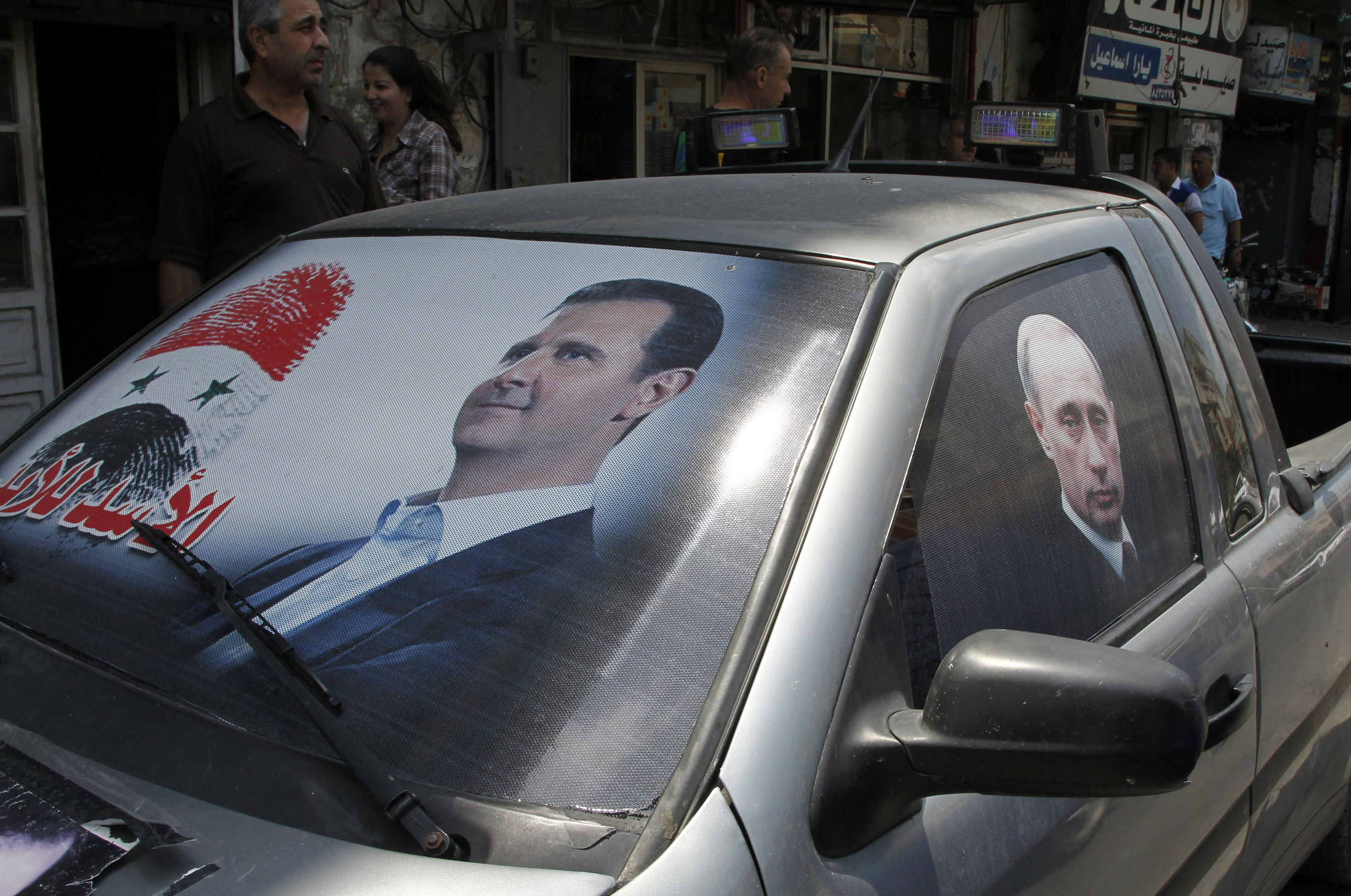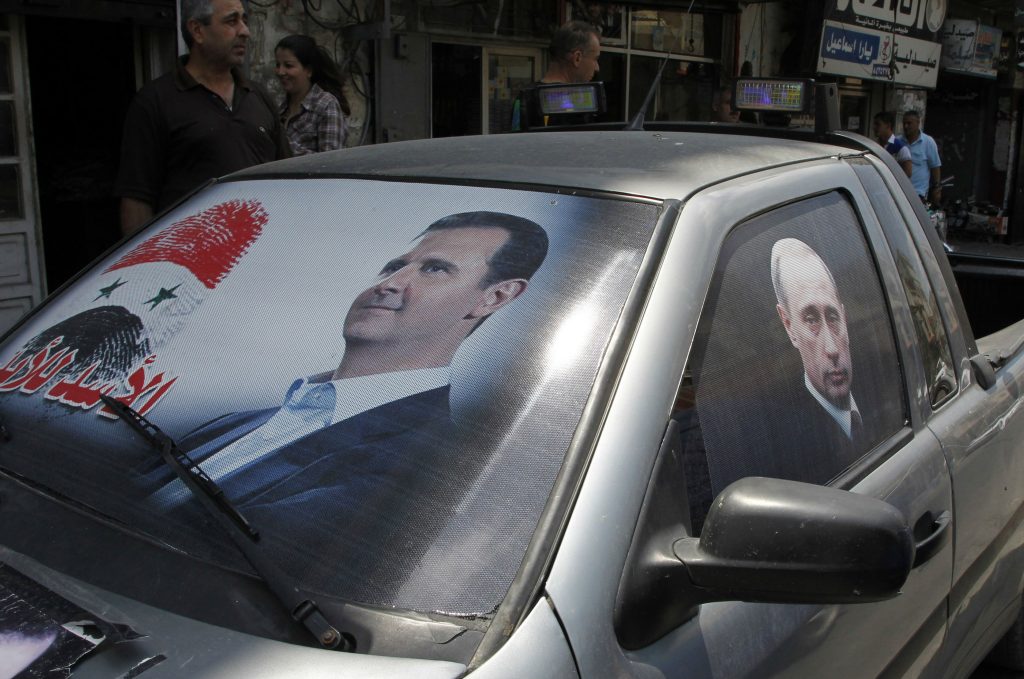 Ever since Moscow’s “little green men” appeared in Crimea, the West has been anxious to provide Russian President Vladimir Putin an “off-ramp” from his aggression in Ukraine. US, French, German, and European Union diplomats have made numerous efforts to find a face-saving way for Putin to back off.
Ever since Moscow’s “little green men” appeared in Crimea, the West has been anxious to provide Russian President Vladimir Putin an “off-ramp” from his aggression in Ukraine. US, French, German, and European Union diplomats have made numerous efforts to find a face-saving way for Putin to back off.
For the longest time, however, it seemed that Putin saw no need for an exit. After all, he took Crimea without paying any real price, and the sanctions imposed on Russia for “annexing” Crimea were small. Furthermore, his hybrid war has yet to achieve its minimal objective: to either remove the pro-Western government in Kyiv or compel it to reverse Western-oriented domestic and foreign policies.
This does not mean Kremlin diplomacy has been unwilling to feign in the direction of a peaceful settlement. For instance, after sending the Russian Army into the Donbas in August 2014 to crush Ukraine’s nearly successful counter-offensive against the Moscow-backed insurgency, Putin did sign the Minsk I ceasefire. However, the Kremlin and its proxies in the Donbas violated that ceasefire so regularly that, by February 2015, they had gained control of an additional 500 square kilometers of Ukrainian land. This led to the Minsk II ceasefire that month, but the same pattern persisted. Since then, regular small advances of the Moscow-backed forces have picked up an additional 200 square kilometers of Ukrainian territory.
Unlike in Crimea, Putin’s gains in the Donbas have come at a real cost. First in the wake of the downing of Malaysia Airlines Flight 17 over Ukraine in July 2014, Washington and Brussels imposed painful sanctions on Russia’s financial sector. Much to Putin’s surprise, the EU did not fall for Russia’s pseudo-compliance with the ceasefire, renewing sanctions this year.
What’s more, a revamped Ukrainian military is putting up stubborn resistance to the Kremlin-led military campaign, and the result has been slow, hard-fought advances for the “separatists” and hundreds of dead Russian soldiers. Despite Putin’s massive propaganda campaign vilifying the Poroshenko government in Kyiv, the Russian people do not want their soldiers fighting in Ukraine, which is why Putin has resorted to hiding Russian casualties from his people.
Credible private reports from Moscow suggest that some in Putin’s inner circle—including Nikolai Patrushev, Secretary of the Security Council of Russia—think their Ukraine-war policy has stalemated and are cautiously exploring other possibilities. To avoid further sanctions and casualties, Putin may be interested in a real ceasefire, at least for now. At least three signs point in this direction:
- Since September 9, the level of shelling in eastern Ukraine has dropped precipitously.
- In a September 10 statement, Russian Foreign Minister Sergei Lavrov said that the local elections in the Donetsk and Luhansk People’s Republics (the areas controlled by Moscow) should take place October 26—the same day as local elections in Ukraine—and in accordance with Ukrainian law (a requirement of the Minsk ceasefire).
- Moscow has removed Andrei Purgin, a staunch proponent of further conquests in Ukraine, as head of the Donetsk People’s Republic’s parliament, and replaced him with the more controllable Deni Pushilin, who is also registered to participate in Ukraine’s local elections.
Syria may be Putin’s rest stop—if not off-ramp—from the Ukraine crisis. Moscow has already acknowledged sending troops there to prop up the regime of Syrian President Bashar al-Assad. In the last few weeks, the Kremlin has flown dozens of transport planes loaded with military hardware to Syria, set up an air base south of Latakia, deployed hundreds of troops to guard that base, and begun bombing operations against rebel groups.
Russian media outlets call Moscow’s Syria efforts the opening of a “second front” against the West—while cutting down on Ukraine coverage. What better way to disguise a retreat, or at least a pause, in the Ukraine war than to trumpet a new offensive elsewhere?
Putin has not given up his objectives of reversing Ukraine’s westward course. Perhaps the lull will end after his trip to the United Nations, and his expected October meeting with French President François Hollande, Ukrainian President Petro Poroshenko, and German Chancellor Angela Merkel. More likely, Putin will see if he can succeed in lifting or easing EU sanctions. Hollande’s premature enthusiasm for sanctions relief for Russia—offered after the four leaders spoke September 9 by phone—certainly would encourage Putin to think this may be possible.
But it would be a mistake of historic proportions to indulge him. Sanctions relief should only come when the Kremlin fulfills its Minsk commitments: the withdrawal of all Russian military and heavy equipment, and the re-establishment of Ukrainian control over its border with Russia. Anything less offers Moscow the ability to resume hostilities at any time.
John E. Herbst is Director of the Atlantic Council’s Dinu Patriciu Eurasia Center. He served as US Ambassador to Ukraine from 2003 to 2006.
Image: Credible private reports from Moscow suggest that some in Putin’s inner circle think their Ukraine-war policy has stalemated and are cautiously exploring other possibilities. To avoid further sanctions and casualties, Putin may be interested in a real ceasefire, at least for now. Credit: Reuters/Khaled al-Hariri

